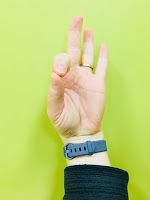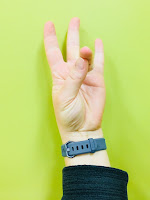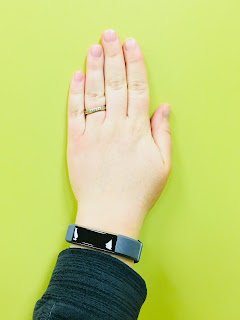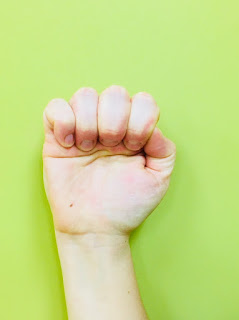Daily tasks can be painful and difficult
when arthritis and other types of joint issues affect the hand and wrist. There
are numerous medications and treatment solutions that can help ease the pain
but exercise is one of the best and noninvasive solution that can provide many
benefits.
when arthritis and other types of joint issues affect the hand and wrist. There
are numerous medications and treatment solutions that can help ease the pain
but exercise is one of the best and noninvasive solution that can provide many
benefits.
Hand exercises can help strengthen the
muscles that support the hand joints. Movement with exercises and stretches
will help to keep ligaments and tendons flexible resulting in better range of
motion and function.
muscles that support the hand joints. Movement with exercises and stretches
will help to keep ligaments and tendons flexible resulting in better range of
motion and function.
What is happening to cause the pain you
might ask? The lack or cartilage or cushioning in the joint causes inflammation
and irritation. Pain can increase with repetitive tasks such as typing or
gripping. The production of synovial fluid which lubricates the joints can be
increased when the hand and wrist are exercised and stretched regularly- this
will improve joint function.
might ask? The lack or cartilage or cushioning in the joint causes inflammation
and irritation. Pain can increase with repetitive tasks such as typing or
gripping. The production of synovial fluid which lubricates the joints can be
increased when the hand and wrist are exercised and stretched regularly- this
will improve joint function.
Take a look at the exercises below and
give them a try!
give them a try!
Thump
Opposition
Opposition
Begin sitting with your hand in a
comfortable position. Touch the tip of your thumb with one finger, then
separate and repeat with each of your other fingers. Make sure to keep the rest
of your arm relaxed during the movement.
comfortable position. Touch the tip of your thumb with one finger, then
separate and repeat with each of your other fingers. Make sure to keep the rest
of your arm relaxed during the movement.
Finger
O
O
Begin sitting upright in a chair with
your elbow resting on a table, palm facing forward, and fingers straight. Make
a circle with your thumb and index finger. Straighten them back out and repeat.
Make sure to keep your wrist straight during the exercise.
your elbow resting on a table, palm facing forward, and fingers straight. Make
a circle with your thumb and index finger. Straighten them back out and repeat.
Make sure to keep your wrist straight during the exercise.
Finger
Spreading
Spreading
Begin sitting upright in a chair with
your hand resting flat on a table. Spread your fingers apart as far as is
comfortable then bring them back together and repeat. Make sure to keep your
fingers on the table during the exercise.
your hand resting flat on a table. Spread your fingers apart as far as is
comfortable then bring them back together and repeat. Make sure to keep your
fingers on the table during the exercise.
Seated
Claw Fist AROM
Claw Fist AROM
Begin with your wrist and fingers
straight. Curl your fingers toward your palm, bending at the middle knuckles. Return
to starting position then repeat. Make sure to keep your wrist straight during
the exercise.
straight. Curl your fingers toward your palm, bending at the middle knuckles. Return
to starting position then repeat. Make sure to keep your wrist straight during
the exercise.
Seated
Full Fist AROM
Full Fist AROM
Begin with your wrist and fingers
straight. Curl all of your fingers toward your palm into a fist—light squeeze
or no squeeze. Return to the starting position
then repeat. Make sure to keep your wrist straight during the exercise.
straight. Curl all of your fingers toward your palm into a fist—light squeeze
or no squeeze. Return to the starting position
then repeat. Make sure to keep your wrist straight during the exercise.
Wrist
Circumduction AROM
Circumduction AROM
Begin sitting with your arm resting on a
table and your hand in a fist, hanging off the edge. Slowly rotate your wrist
in a circle, first clockwise then counterclockwise. Make sure to keep your wrist
relaxed during the exercise.
table and your hand in a fist, hanging off the edge. Slowly rotate your wrist
in a circle, first clockwise then counterclockwise. Make sure to keep your wrist
relaxed during the exercise.
Standing
Wrist Flexion Stretch
Wrist Flexion Stretch
Begin in a standing upright position
with one arm in front of your body, palm facing the floor. With your other
hand, bend your wrist downward until you feel a stretch. Make sure to keep your
elbow straight.
with one arm in front of your body, palm facing the floor. With your other
hand, bend your wrist downward until you feel a stretch. Make sure to keep your
elbow straight.
Standing
Wrist Extension Stretch
Wrist Extension Stretch
Begin in a standing position with one
arm in front of your body, palm facing the ceiling. With your other hand, apply
a gentle downward pressure on your fingers, bending your wrist and keeping your
elbow straight.
arm in front of your body, palm facing the ceiling. With your other hand, apply
a gentle downward pressure on your fingers, bending your wrist and keeping your
elbow straight.
Blog post by Farran Jalbert.





























